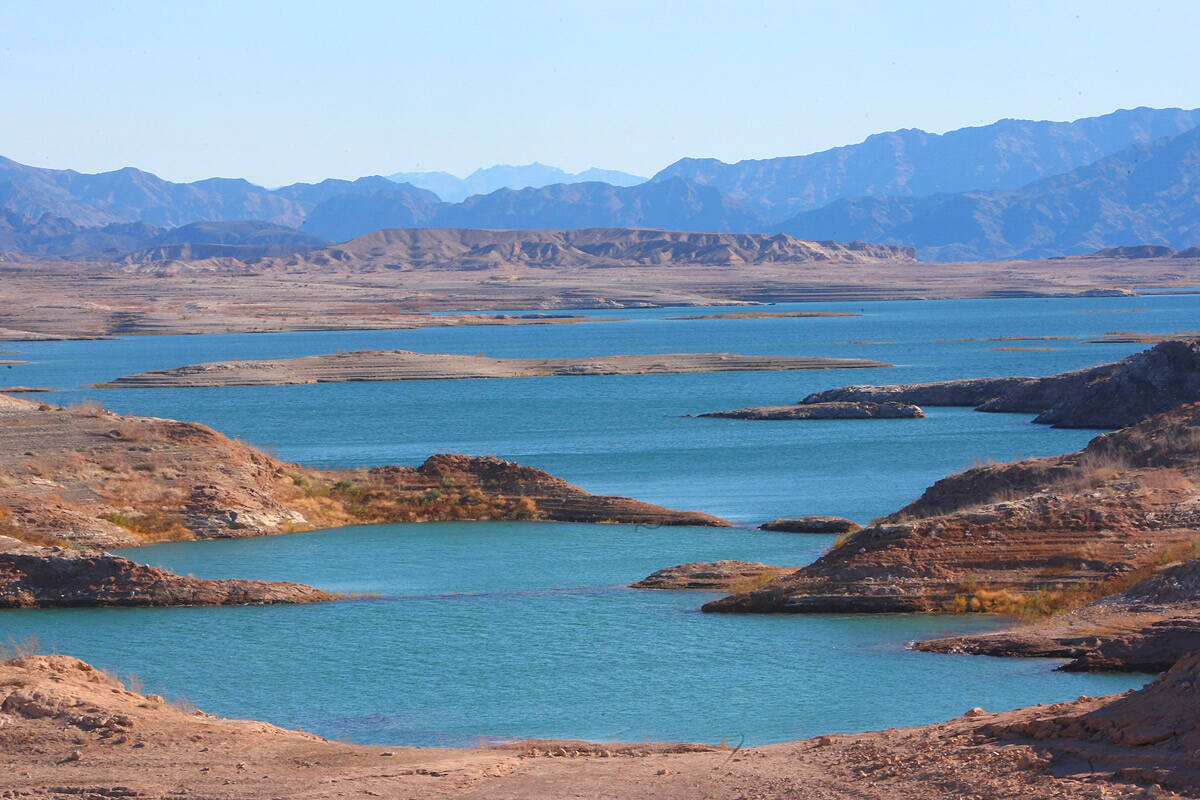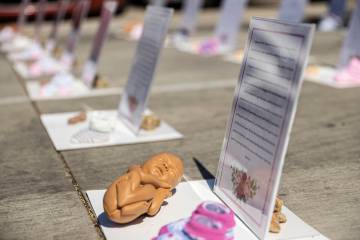VICTOR JOECKS: Las Vegas isn’t running out of water
There’s no need to stress about Las Vegas running out of water.
This month, Emerson College released a poll of Nevadans. It asked respondents about the most important issue facing Nevada. Unsurprisingly, the economy topped the list at 33.5 percent. The second issue might surprise you. It was Nevada’s water supply, at 16.3 percent.
It’s not hard to find folks worried about water. Just read the letters to the editor. The Great Basin Water Network cited the diminishing Colorado River to justify opposing more development in Clark County. One reader emailed me recently, calling the dwindling water supply a “potential disaster.”
You get the impression that some people think they’ll wake up one day, turn the faucet on and find there’s no water left.
That isn’t going to happen. Here’s why.
First, there is a real water shortage at Lake Mead. The bathtub ring makes that obvious. Last year, the federal government announced the first official water shortage declaration at the reservoir. That led to a 7 percent reduction in Southern Nevada’s water allocation.
There are several reasons for this. For one, the Colorado River Compact of 1922 significantly overestimated the river’s annual flow. The Colorado River flows into Lake Mead. Forty million people now depend on that river’s water, a dramatic increase over the past century. The current megadrought has made things worse in a hurry. Leave aside whatever impact global warming may or may not have had. Even if you buy the alarmism, emission cuts won’t solve today’s issues.
Southern Nevada receives 300,000 acre feet from Lake Mead. By comparison, California gets 4.4 million and Arizona 2.8 million. An acre-foot provides approximately enough water for two Las Vegas homes for 16 months. The water shortage declaration cut our allotment by 21,000 acre-feet.
That does sound like a crisis, but it’s not the whole story.
The most important thing to understand is that around 99 percent of Las Vegas’ indoor water is treated and sent back to Lake Mead. Southern Nevada then receives a return-flow credit. If we use 1 million acre-feet, but return 900,000, the net cost is just 100,000.
This is how Clark County supports 2.3 million people and tens of millions of tourists on just 300,000 acre-feet of water. Last year, the region used just 242,000 acre feet of water. The Southern Nevada Water Authority has also banked more than eight years’ worth of water
This explains why the Southern Nevada Water Authority isn’t panicked over new development but opposes decorative grass and large pools. If there are strict limits on grass, more housing will have only a limited effect on the water supply.
Then there’s what would happen if the water level drops to the ominous-sounding “dead pool.” At 895 feet, Hoover Dam wouldn’t be able to send water downriver. That water helps sustain 25 million Americans. That would be a disaster — for those living in California and Arizona, especially farmers. That didn’t stop California officials from rejecting a desalinization plant in May.
But Las Vegas’ water won’t be affected. The water authority wisely built an intake valve into the bottom of the lake years ago. If you don’t believe my optimism, take it from John Entsminger, the SNWA’s general manager. He called Las Vegas “the most water-secure municipal area in the Colorado River Basin.”
The resource Nevada is most likely to run out of is power. If the water drops too low, the dam would stop producing electricity, some of which goes to Nevada. As the state foolishly increases its dependence on unreliable renewable energy, that could contribute to future power shortages.
There may only be one competent and proactive government agency in Nevada. Be glad it’s the Southern Nevada Water Authority.
Victor Joecks’ column appears in the Opinion section each Sunday, Wednesday and Friday. Contact him at vjoecks@reviewjournal.com or 702-383-4698. Follow @victorjoecks on Twitter.























